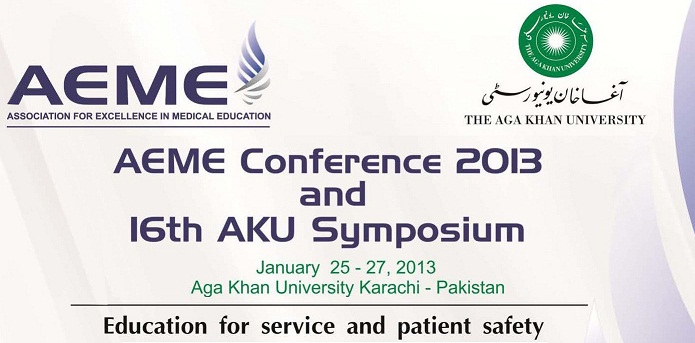Day 2 : Oral Presentations (Theme: Evaluation & Quality Assurance)
An overview of the current situation of Histopathology Fellowship training in Pakistan
Location
Lecture Hall 1
Start Date
27-1-2013 9:45 AM
Abstract
Objective: To observe inter-institutional variation in the availability of resources and academic activities within the Histopathology fellowship program in Pakistan.
Methods: This was a proforma-based survey of histopathology fellowship trainees and young histopathology fellows in Pakistan. The proforma was filled by 47 respondents from 12 centers of the country. All these centers were fully accredited for histopathology training program in Pakistan.
Results: There are 29 institutes all over Pakistan which are partially or fully accredited for histopathology fellowship training which spans over a period of 4 years. Out of the 47 respondents, all of whom were enrolled for FCPS training in histopathology, 16 were senior residents (year 3, 4 and 5) and 31 were junior residents (year 1 and 2). About 35% of the participants were using more than one book as reference book. The two most commonly used reference books were “Rosai and Ackerman's surgical pathology” and “Sternberg's diagnostic surgical pathology”. About 53% of the candidates had access to more than one indexed surgical pathology/histopathology jourrnals. Free online access to medical journals was available only in few centres. Majority of the training institutes were deficient in well-organized academic sessions (e.g., journal clubs and clinicopathology meetings), however tumor board meetings were held in most of places. The specimen count was wide-ranging starting from few thousands to more than 50,000. The variety among surgical specimen also varied broadly. Special stains were in use in all the institutes and immune-fluorescence studies (used predominantly for renal and skin biopsies) were also done in almost all the institutes. Comprehensive panel of immune-histochemical staining (including breast hormone receptor ER, PR studies) were done at only limited centres.
Conclusion: Histopathology fellowship training in Pakistan is not even and wide variations exist between the centers evaluated. We recommend enhancement of current facilities and exchange program between various centres to allow trainees to gain experience in the vital components of histopathology training in which their parent institute is deficient.
Key words: Histopathology, Pakistan, training
An overview of the current situation of Histopathology Fellowship training in Pakistan
Lecture Hall 1
Objective: To observe inter-institutional variation in the availability of resources and academic activities within the Histopathology fellowship program in Pakistan.
Methods: This was a proforma-based survey of histopathology fellowship trainees and young histopathology fellows in Pakistan. The proforma was filled by 47 respondents from 12 centers of the country. All these centers were fully accredited for histopathology training program in Pakistan.
Results: There are 29 institutes all over Pakistan which are partially or fully accredited for histopathology fellowship training which spans over a period of 4 years. Out of the 47 respondents, all of whom were enrolled for FCPS training in histopathology, 16 were senior residents (year 3, 4 and 5) and 31 were junior residents (year 1 and 2). About 35% of the participants were using more than one book as reference book. The two most commonly used reference books were “Rosai and Ackerman's surgical pathology” and “Sternberg's diagnostic surgical pathology”. About 53% of the candidates had access to more than one indexed surgical pathology/histopathology jourrnals. Free online access to medical journals was available only in few centres. Majority of the training institutes were deficient in well-organized academic sessions (e.g., journal clubs and clinicopathology meetings), however tumor board meetings were held in most of places. The specimen count was wide-ranging starting from few thousands to more than 50,000. The variety among surgical specimen also varied broadly. Special stains were in use in all the institutes and immune-fluorescence studies (used predominantly for renal and skin biopsies) were also done in almost all the institutes. Comprehensive panel of immune-histochemical staining (including breast hormone receptor ER, PR studies) were done at only limited centres.
Conclusion: Histopathology fellowship training in Pakistan is not even and wide variations exist between the centers evaluated. We recommend enhancement of current facilities and exchange program between various centres to allow trainees to gain experience in the vital components of histopathology training in which their parent institute is deficient.
Key words: Histopathology, Pakistan, training

